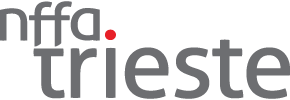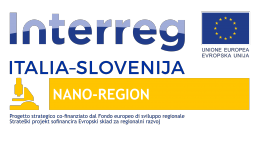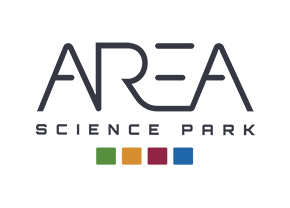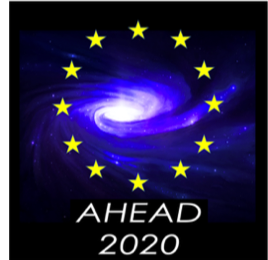IOM hosts and maintains many Laboratories and Facilities and implements open access to them in the framework of pan-European infrastructures. A rich and complete set of complementary tools and methodologies is provided, including atom-by-atom synthesis, fine analysis, materials and device functionalization, theoretical modelling and simulation, in order to tackle multidisciplinary scientific issues and to develop novel technologies.
For external users belonging to specific scientific or industrial communities, different access opportunities to IOM facilities are presently offered
National and International scientific and industrial communities may access to IOM synchrotron beamlines via Elettra Calls for Proposals (two Calls per year). Access to the synchrotron radiation beamlines is free of charge for Users intending to publish their scientific results in the literature. Users intending to perform proprietary research must contact the responsible of the beamline and the Director of IOM. For CNR beamlines, a minimum of 50% of the Public quota is reserved to National Users while a maximum of 20% of beamtime can be dedicated to joint CNR-Elettra proposals.
Details on how to submit a proposal can be found at this link
The IOM beam lines at Elettra available for access are the following: ALOISA, APE-LH, APE-HE, BACH, BEAR, GasPhase, SISSI MAT
Selection procedure
Proposals are assigned on a semester basis after evaluation by independent Review Panels appointed by Elettra. The proposal are initially scrutinized by the beamline responsible for technical feasibility. A proposal judged "unfeasible" is discarded without forwarding to Review Panels for scientific assessment; for this reason, it is important to take contact with the beamline responsible before submission of a Proposal. The Review Panels produce a ranking of Proposals based on a scientific evaluation by a blind review procedure, to which the beamline responsible does not take part.
Type of proposals
• Normal proposals at IOM beamlines take 15-21 shifts (also depending on beamline specifications) and are allocated on a semester basis.
• In Long-Term proposals, a larger number of shifts can be allocated over a two-year basis (max 4 semesters); LT proposals are solely intended for experiments where complex and large Users' instrumentation (e.g. an experimental endstation) must be fitted to the exit of a beamline; a limited number of LT proposals are accepted by Elettra, and some IOM beamlines do not accept them at all (contact the beamline responsible).
• Elettra-CNR proposals: they must be part of a CNR project, performed in collaboration with Elettra (both members of CNR and Elettra must be listed in the proposal description) and is subject to approval by the beamline responsible; such proposals will be evaluated by the Elettra-CNR Bilateral Committee and then, in case of approval, by the Elettra Peer Review Panel; these proposal may be allocated through several semesters (max 4).
The access to the LISA beamline is free of charge and can be obtained by submitting proposals to the ESRF or the CERIC committees.
Details about the forthcoming calls and the exact deadline dates are regularly diffused via the mailing list of the LISA users.
Results of the selection by the review panel committees are known about two months after the final deadline.
Contact: dr. Francesco d'Acapito, LISA beamline responsible.
NFFA-Europe Pilot is a transnational access programme funded by the European Union under Horizon 2020 that offers free of charge access to several facilities in ten Countries throughout Europe. Via a Single Entry Point, academic and industrial users can submit a proposal to answer a specific scientific question by a combination of at least two complementary approaches, spanning from lithography&patterning, to growth&synthesis, structural&morphological characterisation, electronic&chemical&magnetic characterisation, theory, nano-to-micro scale-up. After a rigorous technical and scientific evaluation, successful proposals are directed to the most appropriate European facility. CNR-IOM participates to NFFA-Europe Pilot with several laboratories and computational resources in its headquarters, including some beamlines at the Elettra synchrotron radiation source, and with two laboratories in Perugia.
For more information and proposal submission: www.nffa.eu

Open access for national and international users to state-of-the-art nanoscience tools for the growth, characterization and advanced spectroscopy of materials, at Elettra synchrotron radiation and FERMI free electron laser facilities, in Trieste. NFFA-Trieste is exclusively dedicated to research projects that involve the integrated use of more than one technique in the nanoscience research. There are no deadlines and proposals are accepted and evaluated without interruption.
NFFA-Trieste website: www.trieste.nffa.eu

The Nano-Region consortium offer to SME and large companies the opportunity to get in touch with the nano-world through a program of Proof-of-Concept activities, designed to identify and then demonstrate the feasibility of a nanotechnological approach to specific issues. For more information on the project and on the access opportunities see www.nanoregion.eu

CNR-IOM is part of the ARGO System, the new industrial system based on process and product innovation led by Area Science Park, and especially of its Innovative materials platform and of its structural biology platform.
Both platforms are addressed to the productive sector and aim to foster the economic development of the region, increase the competitiveness of existing companies, support the transformation of ideas in business and exploit the results of science.
CNR contributes to these strategical objectives with competences and instrumentation in the field of electronic microscopy, ion-beam microscopy, cryo microscopy, scanning probe microscopy, syntheses and fabrication of nanostructures and scaffolds and micro-chemical analysis.
For further information see the dedicated website section (R&D PLATFORMS » Area Science Park) or contact dr. Maddalena Furlan (maddalena.furlan@areasciencepark.it) or Marco Lazzarino.

The transnational access (TNA) program of AHEAD 2020 allows the access to the best European test and calibration facilities and training/mentoring on X-ray data analysis and computational astrophysics at astronomical institutes and data centres. Moreover, it offers the possibility for scientists and engineers at all expertise levels to visit European institutes of their choice through visitor program calls. Proposals will be peer-reviewed by specific AHEAD2020 selection panels and ranked according to their merit. The access costs for the selected facility will be covered by AHEAD2020 as well as travel costs and daily allowances for the successful applicants.
CNR-IOM participates to AHEAD 2020 with BABE infrastructure (BACH and BEAR beamlines, https://babe.iom.cnr.it/) which is one of the six available facilities providing to the astrophysics community a suite of installations and related experimental techniques and methodologies for photonic characterization and microscopic diagnostics of optical elements, optical devices and related constituent materials.
For more information and proposal submission: https://ahead.iaps.inaf.it/

The access to FNF is regulated by the payment of an access fee as a contribution to the facility running costs and to the purchase of consumables available to users. The rate is individual, it last six months, and it grants access to the entire operating equipment in the facility after adequate training and testing. Complete information on the access rules are available at the FNF web site.
Contact person : Simone Dal Zilio
